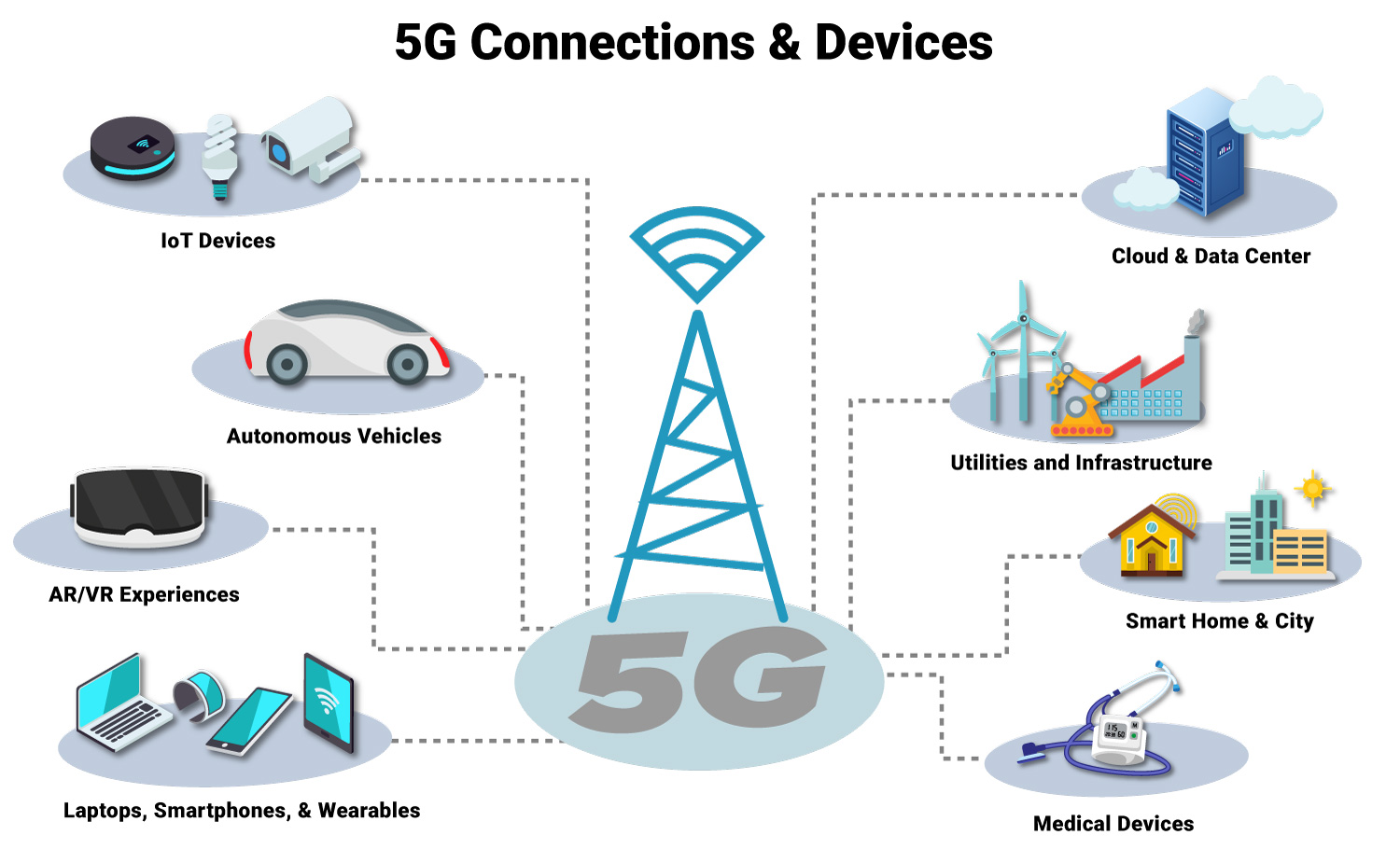Ahlian Jian Insights
Exploring the latest trends and news in various fields.
5G: The Speedy Game Changer You Didn't See Coming
Discover how 5G is revolutionizing technology and life as we know it. Don't miss out on the speedy game changer you never saw coming!
Understanding 5G: How It's Revolutionizing Connectivity
5G technology is set to revolutionize connectivity across the globe, promising faster speeds, lower latency, and greater capacity than its predecessors. Unlike previous generations of mobile networks, 5G utilizes advanced technologies such as millimeter waves, Massive MIMO, and beamforming to enhance the user experience. This enhanced network architecture enables users to download HD movies in seconds, stream high-quality video content without buffering, and engage in seamless video conferencing, making it a game-changer for both personal and professional use.
The impact of 5G extends beyond mere convenience; it is driving innovation across multiple sectors, including healthcare, automotive, and smart cities. For instance, the ability to connect millions of devices simultaneously will pave the way for the Internet of Things (IoT) to flourish. Potential applications range from remote patient monitoring in healthcare to autonomous vehicles communicating in real-time. As we embrace this new era of connectivity, understanding the transformative power of 5G will be crucial for individuals and businesses alike, ensuring they stay ahead in an increasingly digital world.

Top 5 Benefits of 5G Technology for Everyday Life
The advent of 5G technology has revolutionized the way we communicate, work, and live. One of the most significant benefits is the enhanced speed it offers compared to previous generations. With data transfer rates up to 100 times faster than 4G, everyday activities such as downloading large files or streaming high-definition content become seamless experiences. This rapid connectivity not only improves user satisfaction but also allows for more efficient multitasking, enabling individuals to handle more tasks simultaneously.
Another critical advantage of 5G is its ability to support a vast number of connected devices. As the Internet of Things (IoT) continues to expand, the demand for stable and reliable connectivity grows. 5G technology can support up to one million devices per square kilometer, ensuring that smart homes, wearable tech, and other connected devices function without interference. This capability ushers in a new era of convenience, allowing us to monitor our health, manage our homes, and interact with our surroundings like never before.
Is 5G Safe? Debunking Common Myths and Misconceptions
The emergence of 5G technology has sparked a wave of concern and speculation regarding its safety. One of the most prevalent myths is that 5G increases exposure to harmful levels of radiation. However, it's essential to understand that 5G technology operates within internationally accepted safety limits established by organizations such as the World Health Organization (WHO) and the International Commission on Non-Ionizing Radiation Protection (ICNIRP). These guidelines are designed to protect users from potential harm, and extensive research has consistently shown that radiofrequency exposure from mobile networks, including 5G, is well below these limits.
Another misconception surrounding 5G safety is the idea that the rollout of this technology will lead to a surge in health issues, including cancer. Yet, numerous studies have examined this correlation and have found no substantial evidence to support such claims. In fact, according to the American Cancer Society, the frequency ranges used by 5G are similar to those used by previous generations of mobile networks and do not have enough energy to ionize atoms or molecules, which is what typically leads to cellular damage. As we continue to integrate 5G into our everyday lives, it is crucial to rely on credible scientific evidence rather than myths and misconceptions that can provoke unnecessary fear.